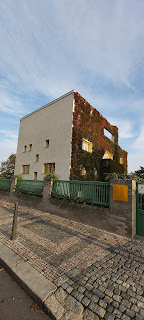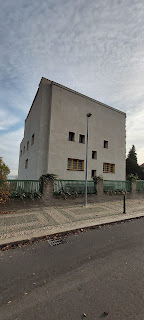Photo Credit: Manoj Parmar Architects
Architecture and cities have metaphysical presence in us. We
experience them differently depending on the state of worldliness that we
inhabit, willingly or unwillingly. As a result of the recent global pandemic
and the subsequent lockdown, architecture and the city appears to be a dream
sequence of inconsequential collapsed time. The time is warped and entrenched
into inscription and description of its architecture. It is like a De Chirico
painting that reveals the ‘other’ city, conception of scaling and
re-represented objects that are irrelevant to its own existence and moving away
from any other literal interpretation. Architecture without people, cities
without events are delirious to their very nature of being.
Public places with its architecture evoke another metaphysical city without people and events, destabilizing the act of perception and comprehension, engagement& disengagement, tending to be both thought provoking & disturbing and reading & writing; all simultaneously. The city has appeared to be compelling and resonating its formative circumstances while masking its contamination of time. It encrypts the notations that are only parallel to inscriptions of archaeology whose notation brings meaning of the unforeseen &of untold stories.
The city and its architecture becomes another world of
exploration because the city slowly begins to dissolve itself into its ordinary
architecture. The events and people are no more remarkable sets, rather they
become unrelenting glimpses of splintered utopia. The motion-less
city-scape engulfed by inexplicable moods of
social estrangement.
The doors become more sceptical and the windows suddenly become lens for voyeurism. The door that was hinged in time, opens in fear, the window that frames the unframed is morphed with memories of time. The view and the viewed are in intense conflict of existence. The architecture and the city begin to displace itself from being framed to being the frame of the unseen. It is a strange scene of a movie that was never shot with a keen eye or was desirable of wanting. It rather was that eye which is compelled to hover with utter disdain to the silence of the shadow-less city.













